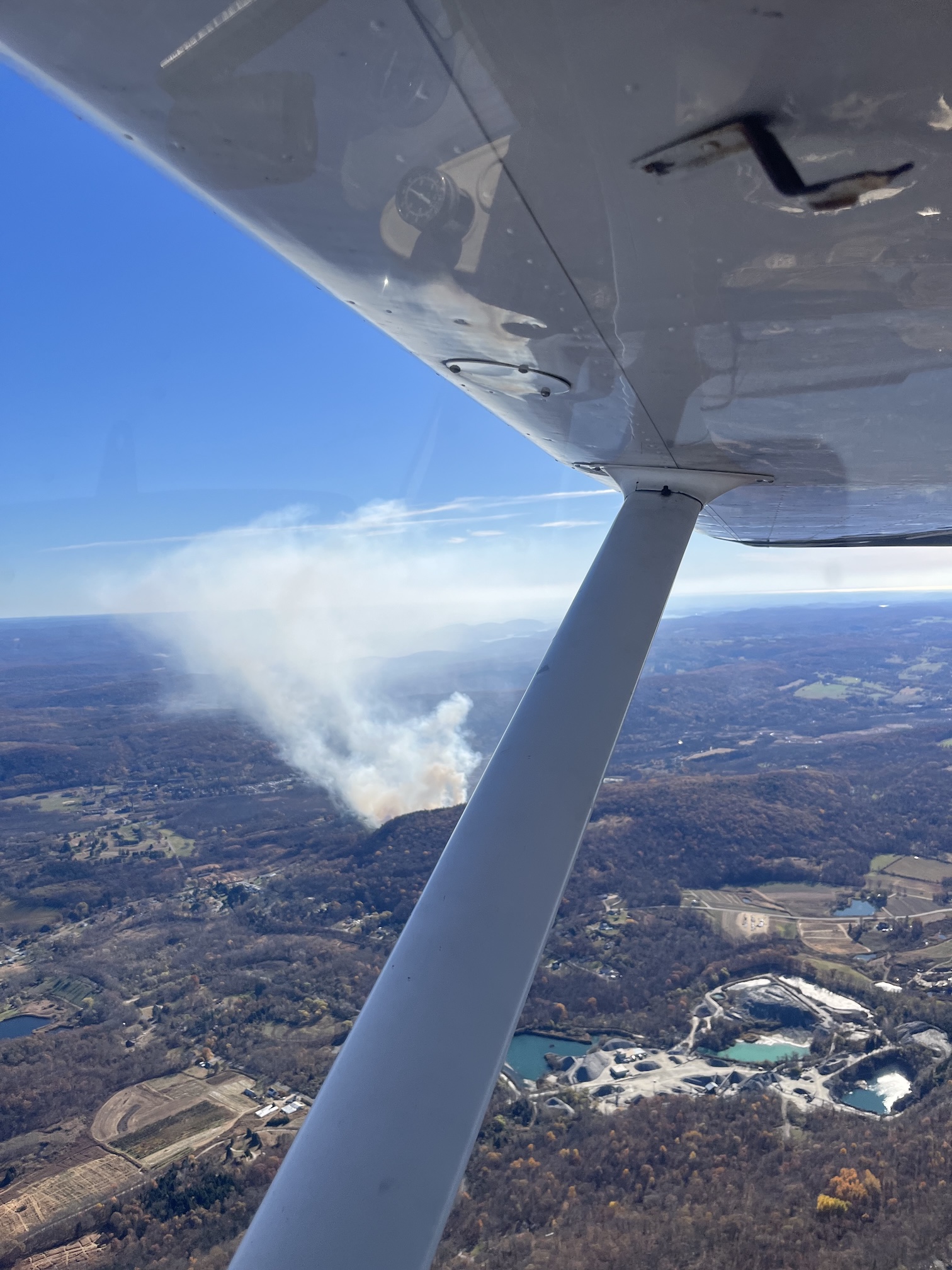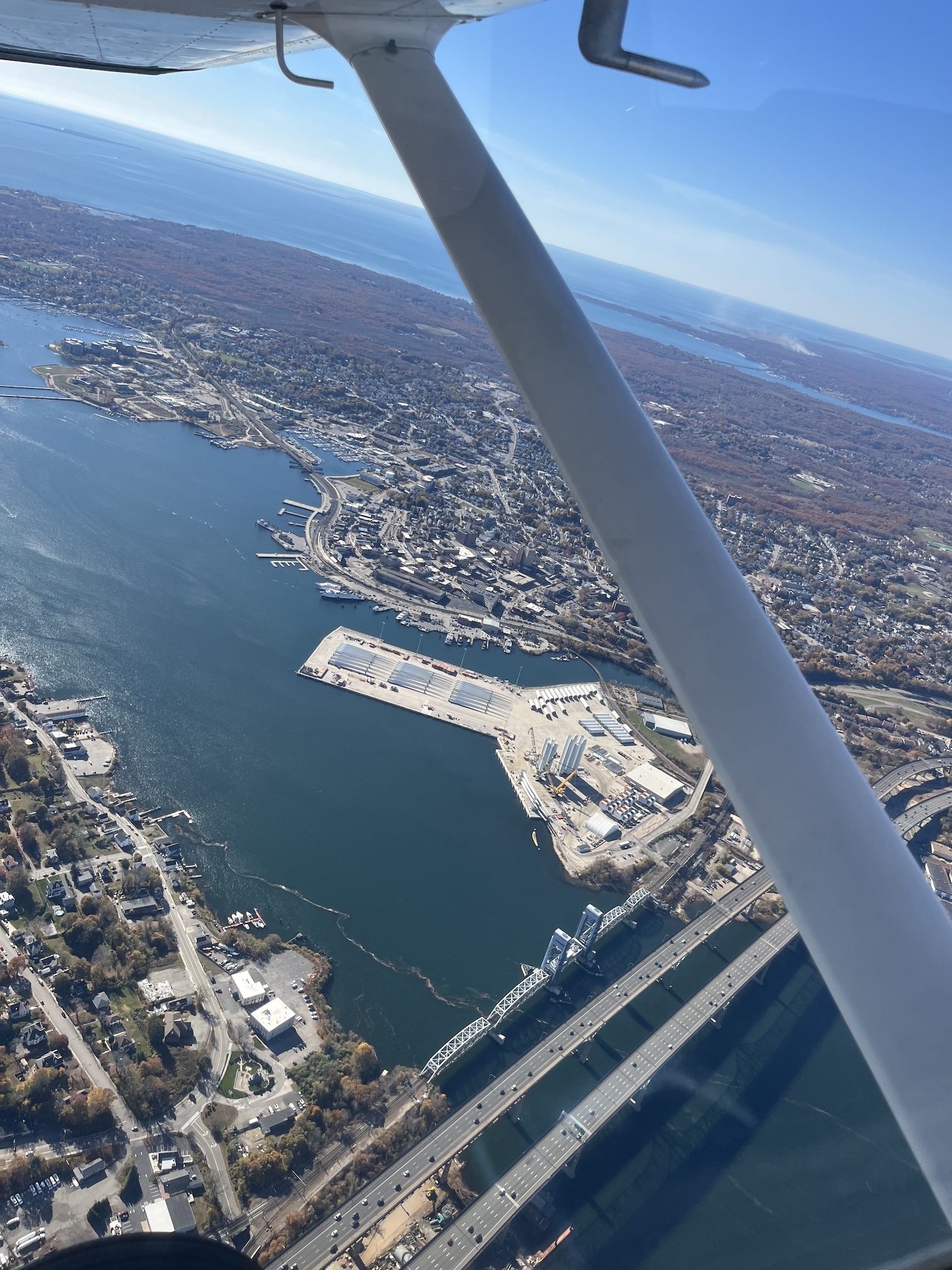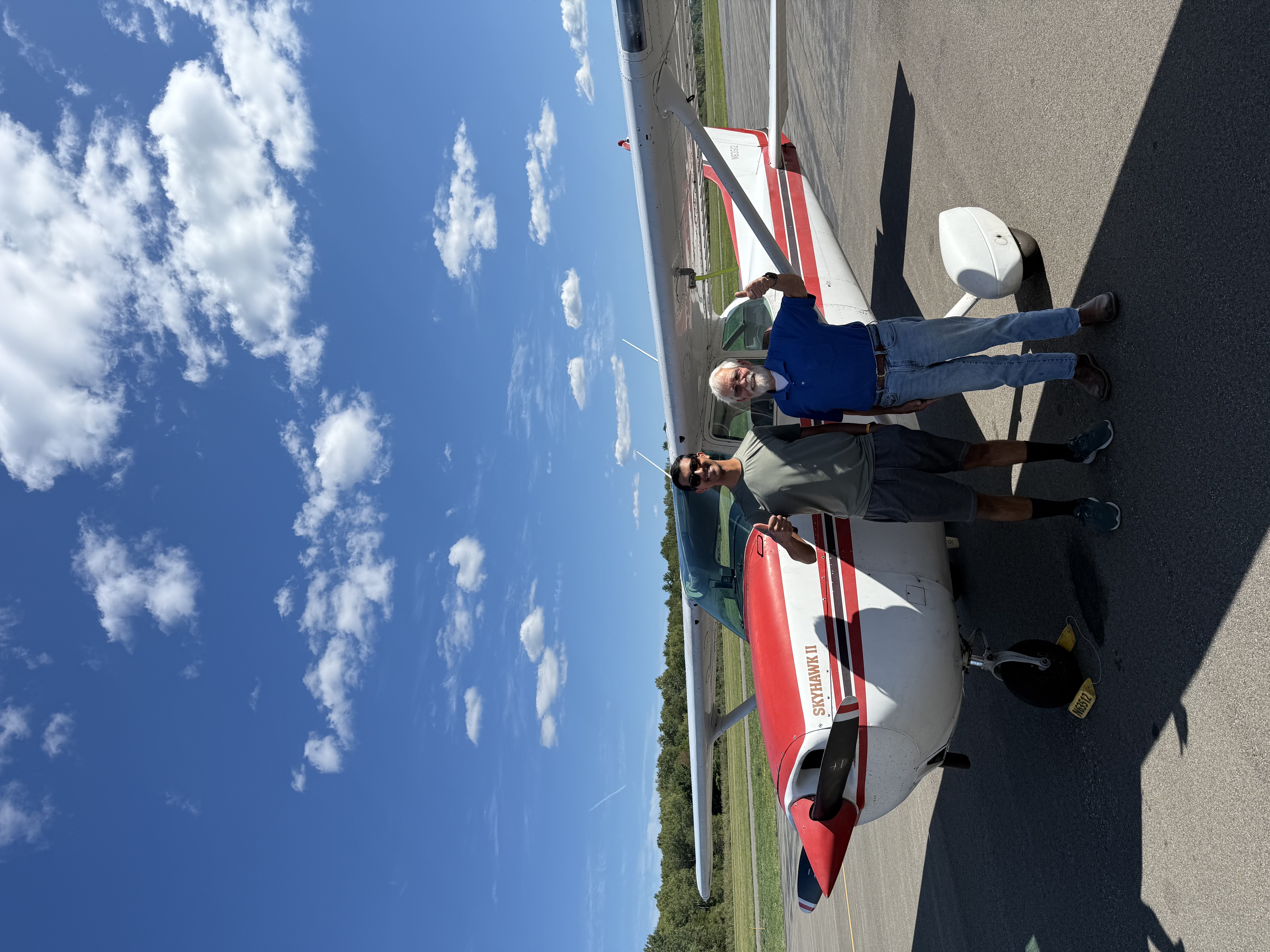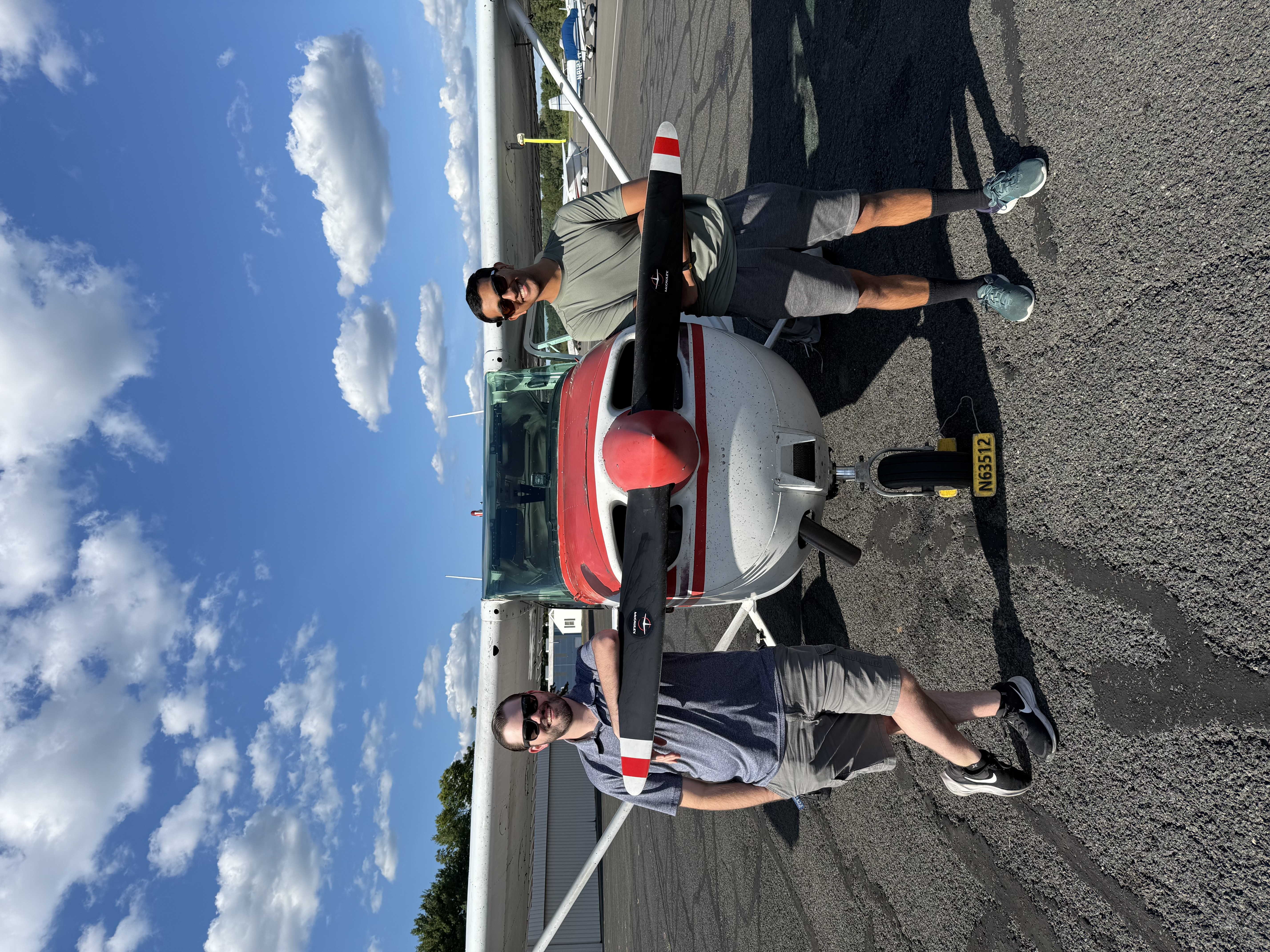Becoming a Pilot
When I was young, I remember looking at a jet engine propeller windmilling while waiting for a flight at an airport. It was mesmerizing. I knew from then on I’d wanted to become a pilot. I never pursued it though. I found myself good at math and liked computers, so I went down the computer science route. I’d done a discovery flight when I was in high school and latched onto the experience.
Learning to Fly
On September 1, 2023, I began my journey to learn to fly at….Learn 2 Fly in Hartford, CT! I started learning to fly in a Cessna 150 (C150). It was a plane that measured its airspeed in mph, could only seat 2 people, and typically cruised at or below 100 mph (very slow in the general aviation world). Training began by learning the basics of flight: preflighting, taxiing, climbs, descents, turns, communications with tower. After some time, I’d began learning stalls, slow flight, emergency procedures, ground reference maneuvers, airport traffic patterns, takeoffs, and the hardest part- landings.
After 24.8 total hours of training in the 150, I’d done my first solo flight on May 9th, 2024. It was 3 laps in the pattern at KHFD. My first landing was okay. My second and third were great. The gratification of being able to pilot a plane on my own was immense. Below is a picture after my first solo. Everyone is surprised seeing me next to the plane- it’s quite tiny!

Now that flying fundamentals were established, it was time to have what in my opinion was the most fun part about training- navigation. This is what flying meant to me. Getting from one place to another. I flew predominantly to KPOU (Poughkeepsie, NY), KGON (Groton, CT), and KOXC (Oxford, CT). I did some solo XC flights during this time too and that same gratifying feeling came back. After XC flights I said to myself, “This is exactly what I want to be doing once I get my license”. It was an amazing feeling that I did that. CT was having wildfires, so I was able to get some gnarly pictures/videos in the air (wildfires are in both picture below). The second picture is a staging area for an offshore wind turbine farm in Groton, CT.


The Big Setback
Unfortunately, my flight journey stopped abruptly at L2F while in the stages of preparing for my “checkride” (the equivalent of the driver’s test for flying). The C150 I was training in was a leaseback plane, meaning the school “leased” the plane from an external owner. Compounded by the fact that the planes’ maintenance shop was based out of Simsbury, CT (4B9) and that new students were beating this plane up, the owners decided to pull the plane from the school. This period really stank for me- I had 55.4 hours and was hoping to take my checkride within the next 10-15 hours. With no backup 150 at the school, my only option was to switch to training on a different plane or switch to another school with a 150. The problem was that there was no other school near me with a C150.
I took this time period to really analyze whether I was getting the best deal for flight training. I ended up switching to Interstate Aviation, based out of Plainville, CT at Robertson Airport (4B8). There, they had beautiful faciilties, cheaper gas, and 3 different Cessna 172’s (C172). The fleet predominantly consisted of high-wing planes (something I was more used to flying), whereas the fleet at L2F consisted of predominantly low-wing planes. For me, Interstate was a clear winner for continuing my training. Robertson was an untowered field which meant I spent less time taxiing. Even if one plane went down for maintenance or was booked for a day, they had 2 others to book. On-site maintenance meant problems didn’t take a month to get fixed. The airplanes were in great condition. They also had free coffee and dum-dums.
Final Approach
The C172 was a plane that measured its airspeed in knots, could seat up to 4 people, and typically cruised at ~100 knots (115 mph). It would become clear to me that a C172 weighed much more than a C150. I really learned to use trim while flying a 172. The sight picture was also quite a bit different for me. It did take me about 3-4 hours before I finally started getting landings consistent.
Then came checkride preparation. This is what I would spend the next ~25 hours doing. Being more fluent at the oral portion of the checkride, remembering to actually do clearing turns, honing in on standards for short field landings, getting better at steep turns. On September 2nd, 2025, I did my checkride at Columbia County Airport (1B1) with Doug Stewart (pictured below, left), and after 96.4 hours of flight time I’m happy to announce I passed! I officially am a Private Pilot!


My Final Thoughts
Overall, if I could do this journey again I would be more critical of how I choose my school. I chose L2F because I’d done a discovery flight there in high school and it was closer to my house. My worst decision was to fly the 150. I chose it because it was one of their cheapest airplanes to fly, but it was the only high-wing plane in the fleet. The other downsides were that there were no other backup 150s and maintenance had to be done in Simsbury (4B9), not at KHFD. In my time at L2F, I averaged 2 lessons/month over the course of 17 months. When you’re initially starting out, that extra time between lessons really bogs down your ability to consistently reinforce and remember things from previous lessons. Ideally, you should be flying 1-3+ times per week. I would fight off the rust quickly, but to be rusty early on was not good. In my 17 months at L2F, there were 8 1-month periods where I didn’t fly between lessons. In winters I couldn’t fly on weekdays due to early sunset and my need to fly during daylight hours, which meant that weekends required perfect weather and a perfectly functioning plane. Most times, the latter wasn’t the case for the 150. In my pursuit to save money by flying their cheapest plane, I only cost myself more money. If I had flew their low-wing fleet, things would have absolutely been different.
After switching to Interstate, I averaged 5 lessons/month over the course of 4 months. The existence of backup planes meant I didn’t have to schedule on just one plane. On-site maintenance took care of things extremely quickly, and fuel and rental prices were cheaper than KHFD. The only downside was that I had to drive further to get to the airport. Thankfully, weather didn’t stop me too much either. Though I flew 40 hours at Interstate (about 25 more than I expected to fly), my CFI was able to identify deficienies on my flying and I did get to finish up minimum requirements. I kick myself for not having shopped for options in CT, because Interstate wowed me on multiple perspectives.
Nonetheless I must give thanks to the mentors and teachers that have guided me on this journey. I can’t list everyone, but I’d like to thank the CFIs who conducted progress checks with me at L2F and Interstate Aviation. I’d like to thank the wonderful staff at Interstate Aviation at Robertson Airport who were super quick to respond and enthusiastic to help (seriously, give them a call or email if you’re interested in learning how to fly). And last but not least, thank you to my CFI Chris Orszulak who taught me the fundamentals and prepared me for the checkride and CFI Kyle Jones (pictured above, right) who taught me just as much and got me past the finish line. I wish you both the best of the luck and experience at the airlines.